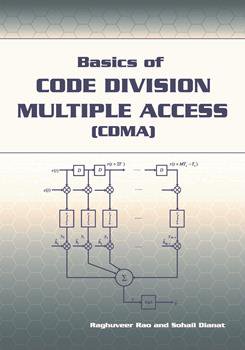
This will count as one of your downloads.
You will have access to both the presentation and article (if available).
This will count as one of your downloads.
You will have access to both the presentation and article (if available).
Synthetic Data for Artificial Intelligence and Machine Learning: Tools, Techniques, and Applications
Deep learning neural networks, or simply, deep neural networks (DNNs), have provided spectacular breakthroughs in the areas of artificial intelligence and machine learning with multiple applications in data science and analytics including scene recognition. One challenge faced by various end user communities is that of interpreting decisions made by DNNs. There is a prevalent notion of DNNs being "black boxes." These can be particularly confounding when erroneous decisions are made by the DNN. However, several recent investigations have proposed methods for interpreting DNNs. Methods have also been proposed for reducing the likelihood of incorrect decisions. This course will provide insights into how these methods approach the problem and into future possibilities for interpreting DNNs.
Topics:
• DNN examples: training & classification
• The different definitions of interpretability
• Interpreting weights of converged DNNs
• Saliency maps in convolutional neural networks (CNNs)
• Layer hierarchy and interpreting layer outputs
• Interpretability vs. Explainability
• Interpreting DNNs through activation analysis & deep visualization
• Use of generative adversarial network models for interpretation
• Correlation across layers and networks
• Sensitivity analysis and Garson's algorithm
• Relating classification to image features
• DNN architectures to enable interpretability
• Approaches for reducing likelihood of erroneous decisions through rank-N classification
considerations
• Future directions
The capture of data using an array of sensors is common in various wave propagation environments such as electromagnetic, underwater acoustics, ground surveillance, ultrasound and other modes. Images are generated by computational methods with such data using a variety of signal processing techniques. Applications encompass multiple areas such as millimeter and terahertz imaging, image synthesis from EM antennas, radar, sonar and acoustic imaging. This course will provide an introduction to the principles underlying methods of image synthesis from sensor arrays and applications in defense and security.
Topics include: Sensor array configurations; far-field vs. near-field analysis, near-field focusing; array resolution and super-resolution; correlative interferometry; subspace methods; wideband processing; image reconstruction and synthetic aperture techniques; interference suppression and resolution enhancement algorithms; compressive sensing with sensor arrays; application to underwater acoustic arrays, synthetic aperture radar, phased array and smart antenna systems, target localization.
Networks consisting of miniature sensors are an exciting new technological development made possible by advances in miniaturization, wireless systems and energy storage devices. Typical deployments consist of miniature battery-operated sensor nodes with wireless communication capabilities resulting in ad hoc configurations. They have a wide range of potential application in areas such as defense, homeland security, environmental monitoring and remote monitoring for plant safety. This course will provide a tutorial overview of sensor network systems covering various aspects such as collaborative processing, energy-aware routing, data aggregation and applications. Topics covered will include: sensor networks, basic frameworks for sensor network operation, energy and bandwidth constraints, reducing communication overhead through local processing, data aggregation: correlation strategies, distributed coding and compression, energy-aware sensor operations: routing and coverage, collaborative information processing, distributed computing paradigms, data and sensor fusion, and target/event detection.
CDMA is a leading digital wireless technology that has shown huge growth in recent years. It provides many times the capacity of conventional wireless technologies while demonstrating excellent potential for performing well in diverse environments. This course introduces the principles underlying CDMA and an overview of current implementations and standards as well as trends for further development. Topics covered include direct sequence spreading, spreading codes, CDMA receivers, capacity, propagation effects, multipath and fading, diversity combining, RAKE receivers, power control, handoff, IS 95 architecture and protocols, WCDMA and CDMA2000.
The course deals with theory and application of continuous and discrete wavelet transforms. Topics covered include: time-frequency resolution, orthogonal and biorthogonal discrete wavelet transforms, multiresolution analysis, wavelet packets, wavelet design, implementation methods, image compression techniques and standards (JPEG2000), pattern recognition, watermarking for secure multimedia information dissemination and wavelet multitone modulation for high-speed internet access using ADSL technology.
The capture of data using an array of sensors is common in various wave propagation environments such as electromagnetic, underwater acoustics, ground surveillance, ultrasound and other modes. The processing of such sensor array data in space and time leads to meaningful information or output such as source localization, image reconstruction, range-velocity estimation, target identification etc. A variety of signal processing techniques have been developed since the early 1980s for achieving effective extraction of such information.
New signal processing techniques are now being developed to handle emerging applications such as multi-input multi-output (MIMO) radar, millimeter wave imaging and Terahertz imaging. This course will provide an introduction to the principles of sensor array signal processing and its applications in defense and security.
Topics include:
<br/>
- Sensor array configurations
<br/>
- Far-field vs. near-field analysis, near-field focusing
<br/>
- Array resolution and super-resolution
<br/>
- Beamforming
<br/>
- Direction finding, source localization and time delay of arrival estimation
<br/>
- Subspace methods: MUSIC, ESPRIT
<br/>
- Wideband processing
<br/>
- Image reconstruction and synthetic aperture techniques
<br/>
- Sparse sampling and compressive sensing
<br/>
- Application to underwater acoustic arrays, synthetic aperture radar, phased array and smart antenna systems, target localization
View contact details
No SPIE Account? Create one


